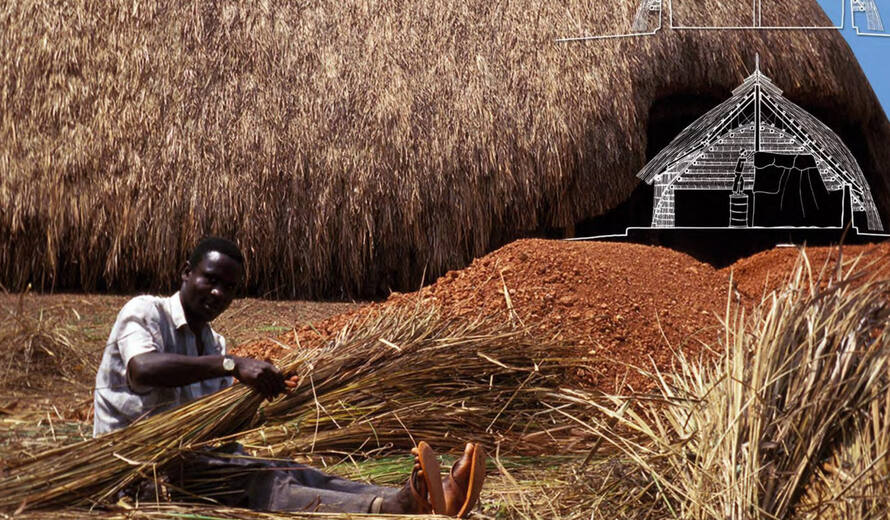Introduction Guide to the Preservation of Traditional Thatching of the Buganda Community of Uganda
As part of the project “Technical and financial assistance for the reconstruction of Muzibu-Azaala-Mpanga, architectural masterpiece of the Tombs of Buganda Kings at Kasubi, Uganda, World Heritage property in Danger” funded by the Japan Funds in Trust to UNESCO, an Introduction Guide to the Preservation of Traditional Thatching of the Buganda Community of Uganda was produced to document and showcase the unique intangible cultural heritage architectural practice known as the ‘ganda thatching technique’ carried out at this exceptional World Heritage property in Uganda.
The guide was written, designed and coordinated by Mr. Sebastien Moriset, an architect from CRAterre engaged by UNESCO for the Japan-funded project. Mr. Moriset worked closely on the guide with local craftspeople and researchers including Mr. Jonathan Nsubuga, an architect and member of the Buganda Kingdom, who is overseeing the reconstruction of the Muzibu-Azaala-Mpanga building, which housed the tombs of the Buganda Kings and was destroyed by a fire in 2010.
As explained in the introduction to the guide: “Thatched roofs are becoming scarce on all continents. They are generally reserved for modest homes in rural areas. Outstanding exceptions in the design and construction of thatched roofs however exist. UNESCO World Heritage List presents several of these extraordinary architectures, which prove that it is possible to build huge monuments just from dry grass and a few reeds, an unthinkable concept for a contemporary engineer or architect trained in reinforced concrete. At a time when humanity is trying to reinvent architecture to return to more environmentally friendly practices, thatch is once again becoming popular. The ecotourism industry and the heritage sector are embracing thatch as a warm and welcoming material which enhances the visitors experience. But these practices remain marginal and some techniques such as the one described in this guide, which are totally unknown and undocumented, could disappear.”
The guide contains forwards by H.E. Ssabasajja Kabaka Ronald Muwenda Kimera Mutebi II, King of Buganda; Dr. Mechtild Rössler, Director of the UNESCO World Heritage Centre (now retired); and H.E. Takio Yamada, Former Permanent Delegate and Ambassador Extraordinary and Plenipotentiary of Japan to UNESCO, an introduction by Mr. Sebastien Moriset, and then details skills, designs, materials, tools, construction details and then ends with a chapter on deterioration and maintenance.
A new generation of thatchers has emerged from this tragedy and is already showing great talent. We wish them all the best in bringing to life the knowledge they have inherited and we thank them for committing themselves to this professional path. This guide to which they have greatly contributed pays tribute to their achievements and marks a further step in the recognition of a unique technique.
I am confident that [this guide] will prove to be a cherished reference for the continued maintenance of the Kasubi Tombs site, which will reinforce respect for the unique know-how of the Buganda Kingdom craftspeople and for other cultural sites around the world.
We are honoured that Japan could help bring solutions and much-needed support to this tragic situation, and hope that this project will help the Tombs of Buganda Kings at Kasubi World Heritage property to be successfully removed from the List of World Heritage in Danger.
We dedicate this guide to the exceptional Ganda craftspeople who have always endeavoured to share their passion and who gave us great lessons of humility. A big thank goes to Christopher Kawoya, Wabulakayole (Senior thatcher of the Kingdom) who never stopped fighting to defend and transmit his knowledge. Despite his great age, he keeps working at the Kasubi Tombs World Heritage Site.
